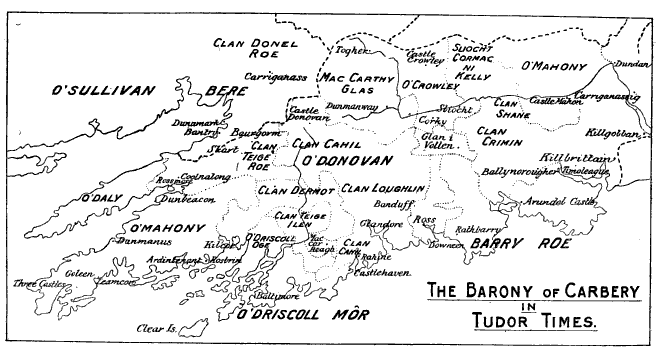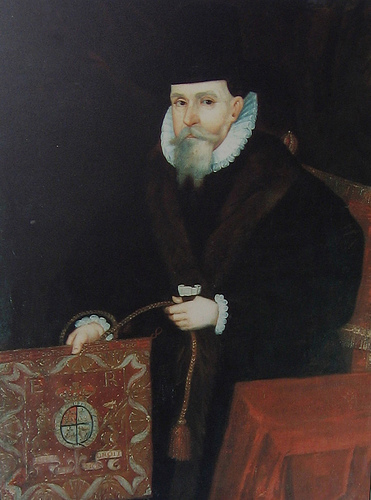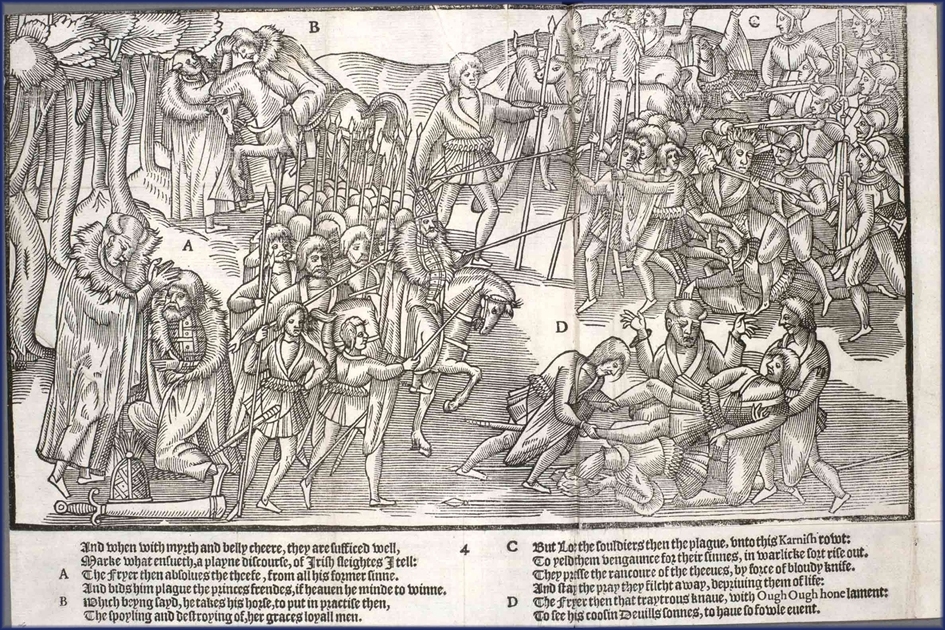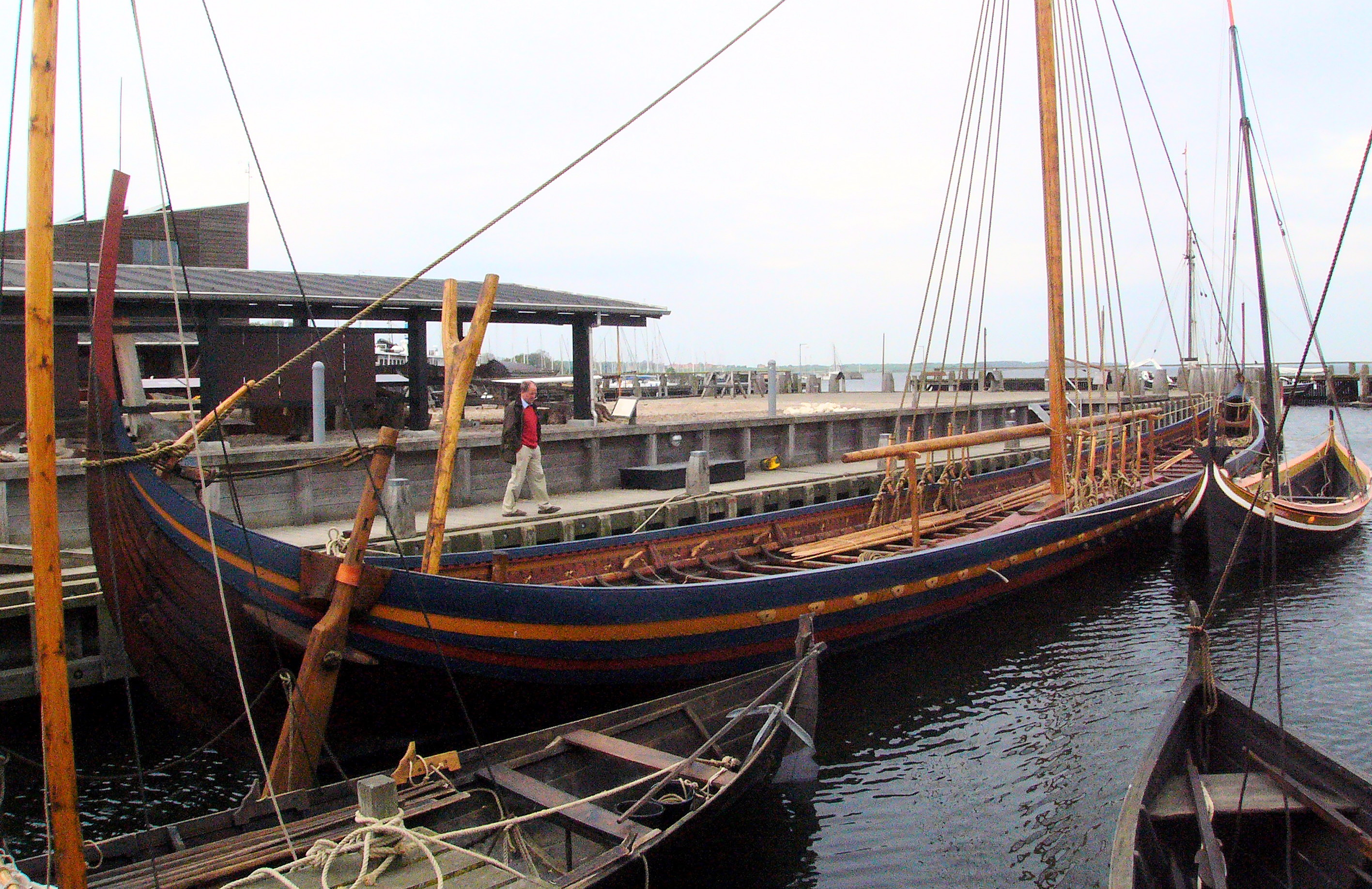|
O'Donovan
The O'Donovan family is an ancient Irish nobility, Irish noble family. Their patronymic surname derives from Irish ''Ó Donnabháin'', meaning the grandsons or descendants of Donnubán, referring to the 10th century ruler of the Uí Fidgenti, Donnubán mac Cathail. During the 12th and 13th century, O'Donovan relations relocated from the Bruree/Croom area south to the Kingdom of Desmond and to Carbery (barony), Carbery, where they were a ruling family for centuries and played a role in the establishment of a feudal society under the MacCarthys. Other septs retreated into the southeast corner of the Ui Fidgheinte territory, reaching from Broadford/Feenagh to the Doneraile area. The northern septs of the O'Donovans did not use a White Rod as the family's position in their original territory was vastly eroded, while several septs of O'Donovans in the southwest territories were semi-autonomous flatha under the MacCarthy Reagh dynasty in Carbery, with the most notable being local pett ... [...More Info...] [...Related Items...] OR: [Wikipedia] [Google] [Baidu] |
Donal II O'Donovan
Donal II O'Donovan (), The O'Donovan of Clann Cathail, Lord of Clancahill ( – 1639), was the son of Ellen O'Leary, daughter of O'Leary of Inchigeelagh, Carrignacurra, and Donal of the Skins, The O'Donovan of Clann Cathail. He is most commonly referred to as Donnell O'Donevane of Castledonovan in contemporary references of his time. His elder brother Diarmaid O'Donovan was slain by Donal Cam O'Sullivan Beare in 1581 following a raid urged by Elizabeth I into O'Sullivan family, O'Sullivan territory. Donal is credited with taking the leadership of Clan Cathail following the death of his father, and was inaugurated and granted the White Rod by the MacCarthy Reagh, his father-in-law Owen MacCarthy Reagh, Owen MacCarthy Reagh, Prince of Carbery, in 1584. He was then later recognized by the Lord Chancellor Adam Loftus (archbishop), Adam Loftus in 1592, defeating an attempt by his younger brother Teige, who alleged Donal to be a Legitimacy (family law), bastard, to depose him. He was th ... [...More Info...] [...Related Items...] OR: [Wikipedia] [Google] [Baidu] |
Donnubán Mac Cathail
Donnubán ('donuva:n), Donndubán ('donðuva:n), or Donnabán mac Cathail, anglicised Donovan, son of Cahall (died 980), was a tenth-century ruler of the Irish regional kingdom of Uí Fidgenti, and possibly also of the smaller overkingdom of Uí Chairbre Áebda within that. In contemporary sources he is only named king of the former, but his sons and later descendants appear as dynasts of the latter. In addition, at his death in 980 Donovan is styled King of Ressad, a unique title in the surviving Irish annals, and the identity of which place is uncertain. He is the progenitor of the medieval and modern O'Donovan family. Playing a notable role in the early twelfth century fictional political saga ''Cogad Gáedel re Gallaib'' (''CGG''), Donovan is notorious for his alliance with his apparent father-in-law or at least relation Ivar of Limerick, the last Norse king of Limerick, and with Máel Muad mac Brain, king of Desmond, against the rising Dál gCais in the persons of Mathg ... [...More Info...] [...Related Items...] OR: [Wikipedia] [Google] [Baidu] |
Carbery (barony)
Carbery, or the Barony of Carbery, was once the largest barony in Ireland, and essentially a small, semi-independent kingdom on the southwestern coast of Munster, in what is now County Cork, from its founding in the 1230s by Donal Gott MacCarthy to its gradual decline in the late 16th and early 17th centuries. His descendants, the MacCarthy Reagh dynasty, were its ruling family. The kingdom officially ended in 1606 when Donal of the Pipes, 17th Prince of Carbery chose to surrender his territories to the Crown of England; but his descendants maintained their position in Carbery until the Cromwellian confiscations, following their participation in the Irish Rebellion of 1641 after which some emigrated to the Chesapeake Colonies. Its modern descendants in name are the baronies of Carbery West and Carbery East, but Carbery once included territories from several of the surrounding baronies as well. To the north/northwest it shared a long and shifting border with the Kingdom of ... [...More Info...] [...Related Items...] OR: [Wikipedia] [Google] [Baidu] |
Jeremiah O'Donovan
Jeremiah O'Donovan (), The O'Donovan of Clan Loughlin, Lord of Clan Loughlin, was MP for Baltimore, County Cork, Ireland, in James II's Patriot Parliament Patriot Parliament is the name commonly used for the Irish Parliament session called by King James II during the Williamite War in Ireland which lasted from 1688 to 1691. The first since 1666, it held only one session, which lasted from 7 May ... of 1689, alongside his kinsmen Daniel O'Donovan (MP Baltimore) of Clancahill and Daniel O'Donovan (MP Doneraile). Obtaining letters patent from Charles II, his extensive landholdings were erected into the manor of O'Donovan's Leap, or the Manor of the Leap, in 1684. He was also appointed Registrar of the Admiralty in Ireland by James II. O'Donovan was the son of Daniel Mac Murtogh O'Donovan, Lord of Clan Loughlin. A Protestant, he married in 1686 Elizabeth Tallant, daughter of Oliver Tallant, and they had three children; Jeremiah, John, and Anne. O'Donovan was the guardian ... [...More Info...] [...Related Items...] OR: [Wikipedia] [Google] [Baidu] |
Uí Fidgenti
The Uí Fidgenti, Fidgeinti, Fidgheinte, Fidugeinte, Fidgente, or Fidgeinte ( or ;In the pronunciation, the -d- is silent, and the -g- becomes a glide, producing what might be anglicized ''Feeyenti'' or ''Feeyenta''. "descendants of, or of the tribe of, Fidgenti") were an early kingdom of northern Munster in Ireland, situated mostly in modern County Limerick, but extending into County Clare and County Tipperary, and possibly even County Kerry and County Cork, at maximum extents, which varied over time. They flourished from about 377 AD (assumption of power of Fidgheinte) to 977 (death of Donovan), although they continued to devolve for another three hundred years. They have been given various origins among both the early or proto-Eóganachta and among the Dáirine by different scholars working in a number of traditions, with no agreement ever reached or appearing reachable. Clans Genealogies deriving from the Uí Fidgenti include O'Billry, O’Bruadair (Brouder), O'Cennfhaelaidh ... [...More Info...] [...Related Items...] OR: [Wikipedia] [Google] [Baidu] |
Gaelic Nobility Of Ireland
This article concerns the Gaelic nobility of Ireland from ancient to modern times. It only partly overlaps with Chiefs of the Name because it excludes Scotland and other discussion. It is one of three groups of Irish nobility, the others being those nobles descended from the Hiberno-Normans and those granted titles of nobility in the Peerage of Ireland. Legal status By the time of the Treaty of Limerick, almost all Gaelic nobles had lost any semblance of real power in their (former) domains. Today, such historical titles have no legal status in the Republic of Ireland. Unlike in Northern Ireland, which is a part of the United Kingdom, the Republic of Ireland does not confer titles of nobility under its constitution. From 1943 until 2003, some of the modern representatives of the Gaelic nobility obtained a courtesy recognition as Chiefs of the Name from the Irish government. The practice ended in 2003 following certain scandals (including a 'hoax' associated with Terence ... [...More Info...] [...Related Items...] OR: [Wikipedia] [Google] [Baidu] |
Ivar Of Limerick
Ivar of Limerick (; ; died 977), was the last Norse king of the city-state of Limerick, and penultimate ''King of the Foreigners of Munster'', reigning during the rise to power of the Dál gCais and the fall of the Eóganachta. His repeated attempts to assert his authority in Limerick and the surrounding region and possibly over even the greater province of Munster itself earned him the most prominent role as antagonist in the first part of the early 12th century saga and political tract ''Cogad Gáedel re Gallaib'', as an enemy of Mathgamain mac Cennétig, claimant to the title King of Munster, and his more famous younger brother and successor Brian Bóruma. According to the author of the ''Cogad Gáedel re Gallaib'', Ivar succeeded in establishing himself as King of Munster for a period in the 960s,Todd, ''Cogadh'', pp. 48–9 until routed in the Battle of Sulcoit in 968, but this claim has long been doubted by scholars. He then appears to have returned only a year or two la ... [...More Info...] [...Related Items...] OR: [Wikipedia] [Google] [Baidu] |
Kingdom Of Desmond
The Kingdom of Desmond () was a historic kingdom in southwestern Ireland. It was founded in 1118 by Tadhg Mac Cárthaigh, King of Munster when the Treaty of Glanmire formally divided the Kingdom of Munster into Desmond and Thomond (, "North Munster"). It comprised all of what is now County Cork and most of County Kerry. Desmond was ruled by the Mac Cárthaigh (MacCarthy) dynasty. Other clans within the kingdom included the O'Sullivans and O'Donovans. Following the Norman invasion of Ireland in the late 12th century, the eastern half of Desmond was conquered by the Anglo-Normans and became the Earldom of Desmond, ruled by the Fitzmaurices and FitzGeralds—the famous Irish family known as the Geraldines. The king of Desmond, Diarmaid Mac Cárthaigh submitted to Henry II of England, but the western half of Desmond lived on as a semi-independent Gaelic kingdom. It was often at war with the Anglo-Normans. Fínghin Mac Carthaigh's victory over the Anglo-Normans at the Batt ... [...More Info...] [...Related Items...] OR: [Wikipedia] [Google] [Baidu] |
MacCarthy Reagh
The MacCarthy Reagh (Irish: ''Mac Cárthaigh Riabhach'') dynasty are a branch of the MacCarthy dynasty, Kings of Desmond, deriving from the Eóganacht Chaisil sept. History The Mac Cárthaigh Riabhach seated themselves as kings of Carbery in what is now southwestern County Cork including Rosscarbery in the 13th century.Butler, "The Barony of Carbery" Their primary allies in the initially small territory itself were O'Donovans, and members of the Ui Chairpre; both were recent arrivals, gaining their lands from the O'Mahonys of Eóganacht Raithlind and the O'Driscolls of Corcu Loígde. The historical record for this period is very confused and a precise sequence of events cannot be reconstructed. A portion of Carbery was conquered around 1232 by Donal Gott MacCarthy, King of Desmond, from whom the dynasty descend. His son Donal Maol Mac Carthaigh, was the first ruler of the new principality. Their descendants would expand their territories considerably and forge a small, wea ... [...More Info...] [...Related Items...] OR: [Wikipedia] [Google] [Baidu] |
White Rod
The White Rod, White Wand, Rod of Inauguration, or Wand of Sovereignty, in the Irish language variously called the slat na ríghe (rod of kingship) and slat tighearnais (rod of lordship), was the primary symbol of a Gaelic king or lord's legitimate authority and the principal prop used in his inauguration ceremony. First documented in the 12th century ''Life of Máedóc of Ferns'', but assumed to have been used long before then, it is last documented in Ireland in the early 17th century. In Scotland the rod was used into the 13th century for the inauguration of its last Gaelic-speaking kings, and for the Norse-Gaelic Lords of the Isles into the 15th. While the reception of the rod was in origin a Gaelic cultural feature, following the Viking and Norman invasion of Ireland some foreign families became significantly Gaelicised. A notable example were the great Hiberno-Norman De Burgh magnates styled Mac William Íochtar, who had become completely Gaelicised, ruled over their follo ... [...More Info...] [...Related Items...] OR: [Wikipedia] [Google] [Baidu] |
Kenry
Kenry (: ) is a historical barony in northern County Limerick, Ireland. Baronies were mainly cadastral rather than administrative units. They acquired modest local taxation and spending functions in the 19th century before being superseded by the Local Government (Ireland) Act 1898. History The barony takes its name from the Gaelic Irish , "Cáen's tribe." The Cáenraige were ruled by the Uí Fidgenti from the 3rd to 10th centuries AD, when the Ó Donnabháin (Donovans) took it from them; they were rulers of the Uí Chairbre prior to this and their new territory became known as Caonraighe Ui Chaibre. In the 12th century, Donal Mor O'Brien and the Anglo-Normans drove the Donovans into West Cork and Kerry. Kenry gave its name to Kenry Castle, which in turn gave its name to Pallaskenry ("palisade of Kenry"). The Book of Lecan connects Kenry to the legendary harper Uaithne, with his sons Uaithnia, Druithnia and Caínnia being the ancestors of the Uaithni, Dál Druithne and ... [...More Info...] [...Related Items...] OR: [Wikipedia] [Google] [Baidu] |
Uí Ímair
The Uí Ímair (; meaning ‘''scions of Ivar’''), also known as the Ivar dynasty or Ivarids, was a Norse-Gael dynasty which ruled much of the Irish Sea region, the Kingdom of Dublin, the western coast of Scotland, including the Hebrides and some part of Northern England, from the mid 9th century. The dynasty lost control of York in the mid 10th century, but reigned over the other domains at variously disputed times, depending on which rulers may be counted among their descendants. This has proved a difficult question for scholars to determine, because reliable pedigrees do not survive. Additionally, for between three and four decades, the Uí Ímair were overkings of the Kingdom of Scotland itself, distinct from the Kingdom of Strathclyde, of which they may also have been overkings, and later briefly the Irish province of Munster, dominated from Waterford, and later still, briefly the English kingdom of Mercia. In the west of Ireland, the Uí Ímair also supplied at least tw ... [...More Info...] [...Related Items...] OR: [Wikipedia] [Google] [Baidu] |





